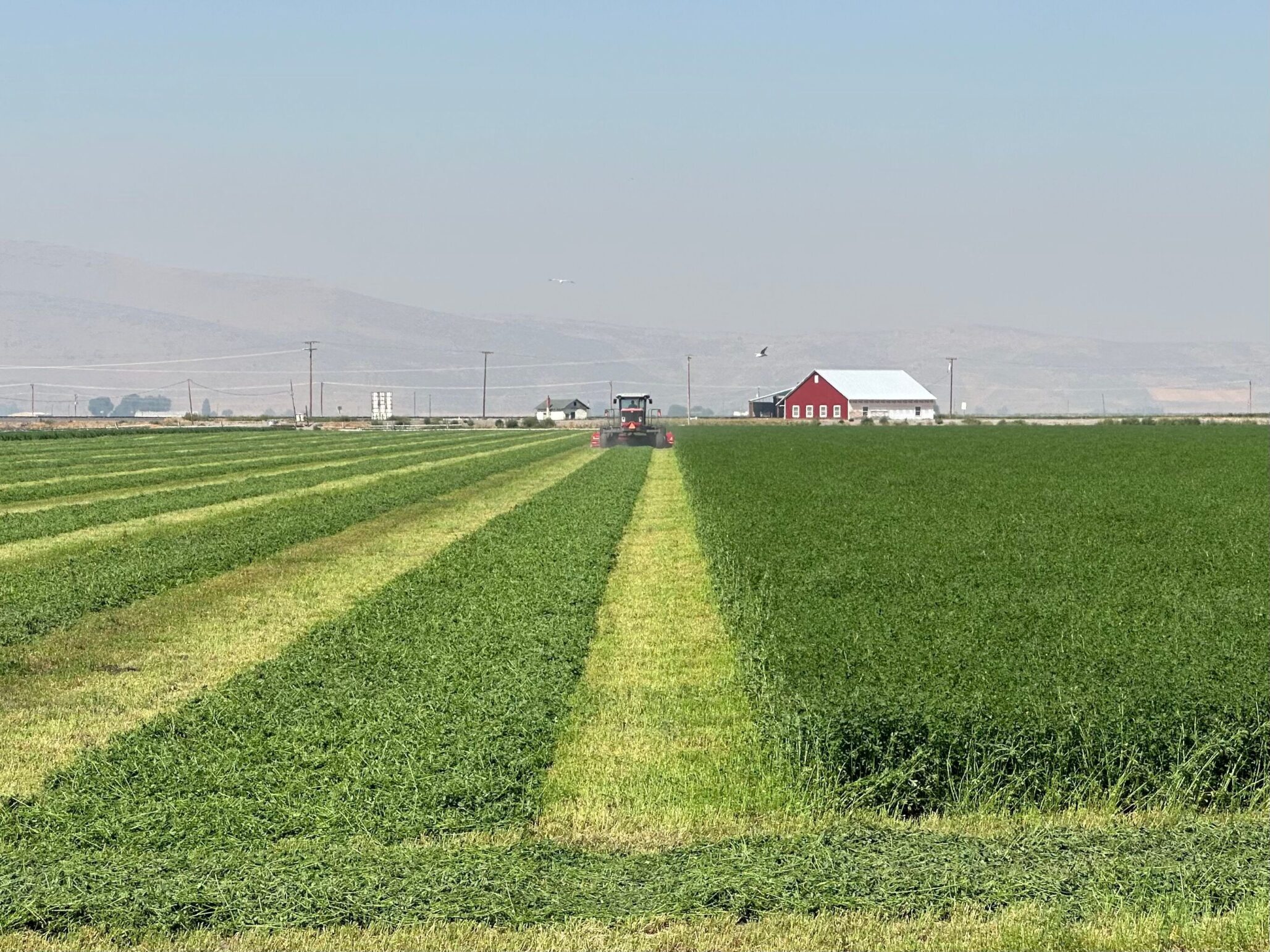Part 2 of The Queen Forage of Sustainability.
Protein Possibilities
“Alfalfa actually produces more protein per acre than any other crop, even without needing that nitrogen fertilizer. That’s a real advantage,” Putnam says.
As such, dairy and cattle industries still rely on alfalfa as an important food source and Putnam says alfalfa can produce between 2,500 and 3,500 gallons of milk per acre, specifically in the Southwest.
But researchers are also working on expanding markets by extracting protein for human consumption. The work is still experimental, but the potential is promising because of the impressive protein content.
Alfalfa leaf protein already has many of the functional properties that human consumption requires; however, the disadvantage is that alfalfa protein is mainly in the form of rubisco, a key enzyme in photosynthesis which degrades quickly after harvest.
Seed producing crops encapsulate the protein in the seed which are much easier to store and transport after fractionation, while leaf protein breaks down rapidly into amino acids through the process of proteolysis.
USDA-ARS research biologist Christina Arther is working to solve this post-harvest proteolysis through a process that allows researchers to more efficiently screen many different alfalfa samples that were either managed differently or genetically diverse varieties.
This process uses a higher-throughput fluorescence intensity-based protease activity assay specifically for aboveground plant tissue.
“Our aim was to balance accuracy and throughput, the latter of which has been a bottleneck,” Arther says. “We use a commercially available protein substrate that is bound to a fluorescent molecule. When the proteases present in a plant sample break down the protein, the fluorescent molecule is liberated, and the fluorescence is increased and can be measured.”
The higher the fluorescence, the more proteases are active in the plant sample and the less likely a particular plant sample represents a potential successful protein extraction.
“If we can find a variety that has significantly lower protease activity, and therefore has more intact protein after harvest, we may be able to use that variety in a breeding program to improve alfalfa for protein extraction for human consumption,” Arther says.
Balancing Tradition and Innovation
Diversification away from just forage and livestock feeding applications could greatly enhance the economic value of alfalfa as well as drive breeding innovation as varieties are developed that are specifically suited for protein extraction.
“Right now, it still makes the most sense to feed it to dairy animals and let them produce human foods,” Putnam says. “But for the future, we’re going to have to look for options like this. Alfalfa actually has about 20 to 24% protein in the whole plant, and if you change your agronomic methods, you can even increase it to 28 or 30%”
“If you’re thinking about the balance between food demand and crop production and the efficiency with which we produce crops, we have to envision things like this for the future,” Putnam says.
As the seed industry works to provide producers with sustainable and environmentally responsible solutions for forage and food, university research is important to develop better seeds, introduce sustainable production practices and expand markets alfalfa.
“It’s an excellent crop for many reasons. Keeping alfalfa around is critical,” Brummer says. “Things are on the upswing but it’s still lagging behind the bigger crops in terms of innovation. We need more people working on it.”












